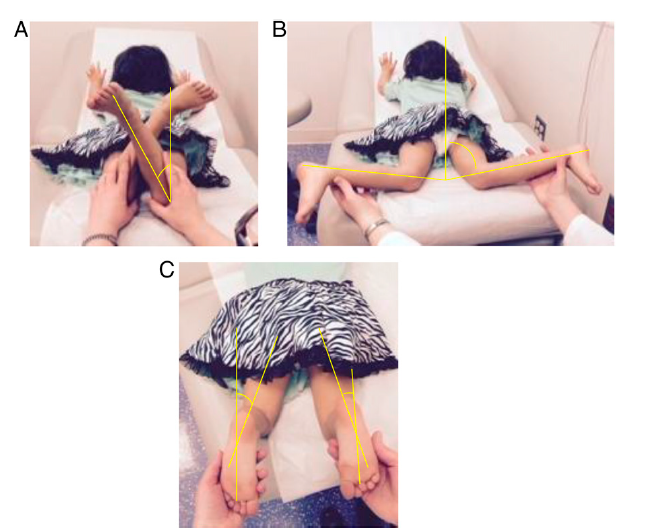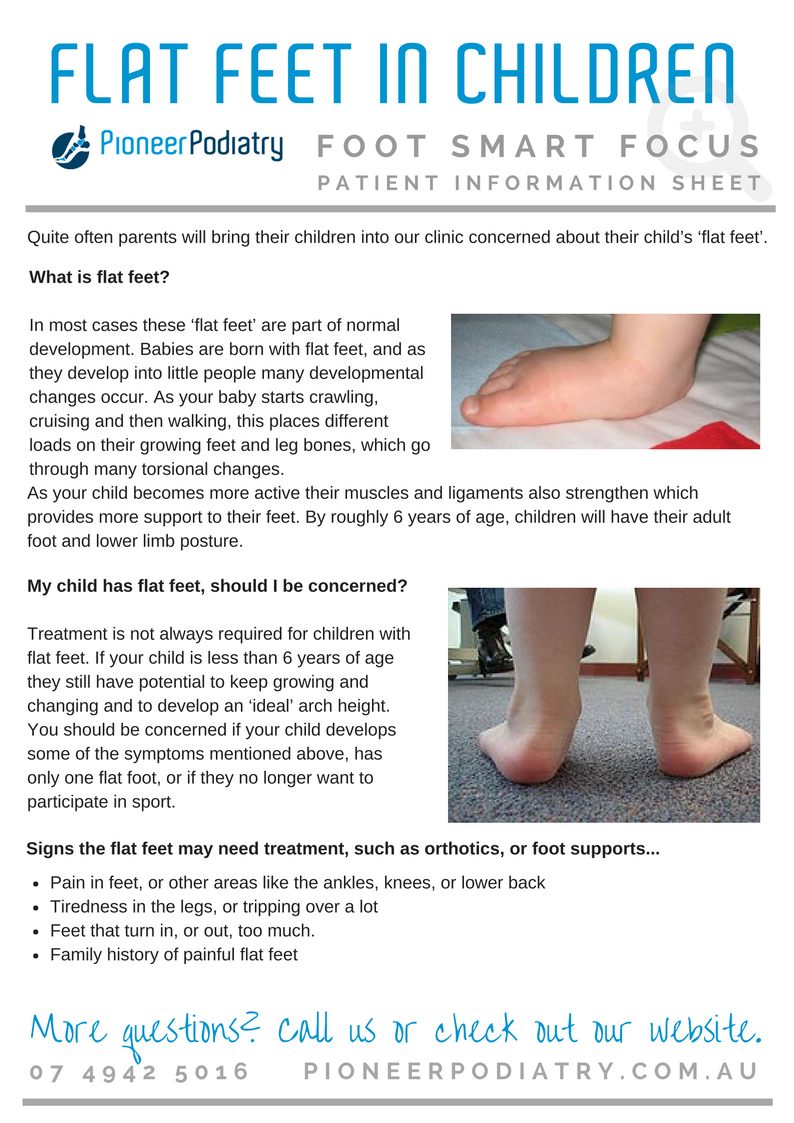How to Diagnose Flat Feet in Kids
This Clinical Practice Guideline (CPG) is based on the review of clinical literature and consensus of current clinical practice.
What is flat feet in kids?
In most cases these ‘flat feet’ are part of normal development. Babies are born with flat feet, and as they develop into little people many developmental changes occur. As your baby starts crawling, cruising and then walking, this places different loads on their growing feet and leg bones, which go through many torsional changes. As your child becomes more active their muscles and ligaments also strengthen which provides more support to their feet.
By roughly 6 years of age, children will have their adult foot and lower limb posture.
My child has flat feet, should I be concerned?
Treatment is not always required for children with flat feet. If your child is less than 6 years of age they still have potential to keep growing and changing and to develop an ‘ideal’ arch height. You should be concerned if your child develops some of the symptoms mentioned above, has only one flat foot, or if they no longer want to participate in sport.
Signs the flat feet may need treatment, such as orthotics, or foot supports...
- Pain in feet, or other areas like the ankles, knees, or lower back
- Tiredness in the legs, or tripping over a lot
- Feet that turn in, or out, too much.
- Family history of painful flat feet
Clinical presentation with paediatric pes planus
- Generalised lower limb and foot pain during and after increased activity
- ‘Growing pains’, or leg pain that occurs in the evening and may disturb sleep
- Awkward gait; poor co-ordination; clumsiness
- Tired or easily fatigued legs
- Difficulty keeping up with their peers during sport and physical activity
- Possible increased risk of growth plate problems such as Sever’s Disease and Osgood
Schlatter’s disease
What causes flat feet?
- Family history of flat feet
- Tight calf muscles or achilles tendon
- Joint hypermobility – where the ligaments are more ‘floppy’ than they should be and
- therefore cannot provide adequate support to the joints allowing the arch to collapse
- Hypotonia – low muscle tone
- Other less likely but more serious causes such may include: Tarsal Coalition, Congenital
- Vertical Talus, Down Syndrome, Cerebal Palsy, connective tissue disorders such as Marfan’s Syndrome and Ehlers Danlos Syndrome
What is the treatment for this condition?
If treatment is necessary for your child, this will involve supportive footwear and foot and lower limb strengthening exercises. Non-customised or Customised Foot Supports (Orthotics) may also be recommended. Supportive footwear and orthotics can quickly reduce a child’s symptoms and assist in improving their co-ordination and proprioception. They also have a greater long term benefit in encouraging normal development whilst reducing the likelihood of lower limb related problems such as foot, ankle, knee, hip and lower back pain
in adulthood.
Paediatric flatfoot clinical care pathway
Downloads
Pediatric Pes Planus: A State-of-the-Art Review
It is important for a general pediatrician to know when a referral to an orthopedic specialist is indicated and which treatments may be offered to the patient. Updated awareness of the current evidence regarding pediatric flatfoot helps the provider confidently and appropriately counsel patients and families.
Journal of Foot and Ankle Research
Patient Info Sheet for Flat Feet in Children
Clinical Practice Guideline for Flat Feet in Children












